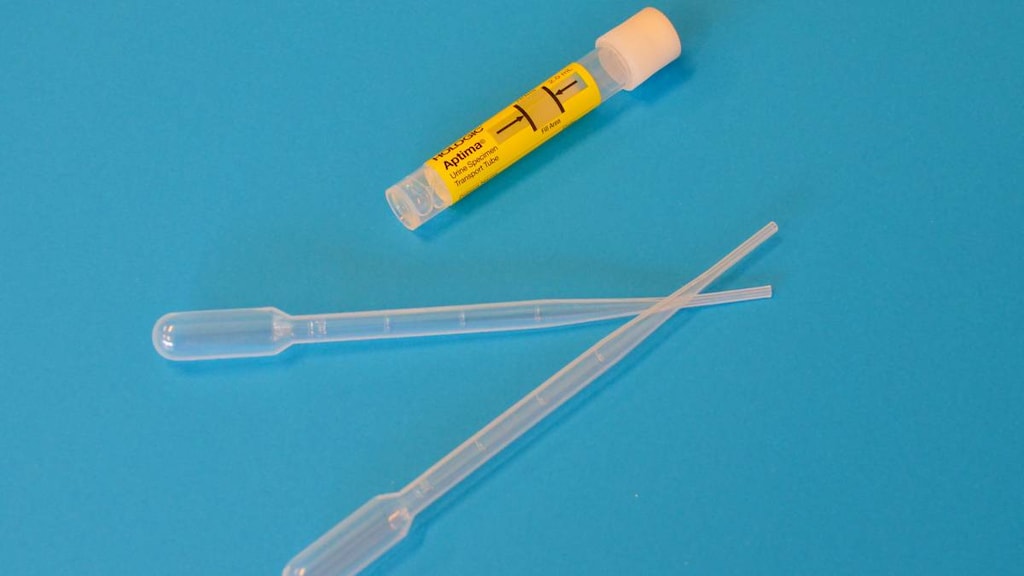Dosage Forms
Excipient information presented when available (limited, particularly for generics); consult specific product labeling.
Solution Reconstituted, Intravenous [preservative free]:
Zerbaxa: 1.5 g: Ceftolozane 1 g and tazobactam 0.5 g (1 ea)
Pharmacology
Mechanism of Action
Ceftolozane inhibits bacterial cell wall synthesis by binding to one or more of the penicillin-binding proteins (PBPs); which in turn inhibits the final transpeptidation step of peptidoglycan synthesis in bacterial cell walls, thus inhibiting cell wall biosynthesis. Ceftolozane is an inhibitor of PBPs of Pseudomonas aeruginosa (eg, PBP1b, PBP1c, and PBP3) and Escherichia coli (eg, PBP3). Tazobactam irreversibly inhibits some beta-lactamases (eg, certain penicillinases and cephalosporinases), and can covalently bind to some plasmid-mediated and chromosomal bacterial beta-lactamases.
Pharmacokinetics/Pharmacodynamics
Distribution
Vd: Ceftolozane: 13.5 L; Tazobactam: 18.2 L
Metabolism
Ceftolozane: Not metabolized; Tazobactam: Hydrolyzed to inactive metabolite
Excretion
Ceftolozane: Urine (>95% as unchanged drug); Tazobactam: Urine (>80% as unchanged drug)
Half-Life Elimination
Ceftolozane: ~3 to 4 hours; Tazobactam: ~2 to 3 hours
Protein Binding
Ceftolozane: 16% to 21%; Tazobactam: 30%
Use in Specific Populations
Special Populations: Renal Function Impairment
Renal clearance was similar to plasma clearance and to the GFR for the unbound fraction suggesting that ceftolozane is eliminated by glomerular filtration. The mean AUC of both ceftolozane and tazobactam increases with decreasing renal function in mild, moderate, and severe renal impairment. In patients with end-stage renal disease, tazobactam’s elimination pathway through metabolism becomes clinically significant; recommended doses in this population are designed to optimize tazobactam’s pharmacodynamic targets (Xiao 2017).
Use: Labeled Indications
Intra-abdominal infection: Treatment of complicated intra-abdominal infection in patients ≥18 years, in combination with metronidazole, caused by Enterobacter cloacae, Escherichia coli, Klebsiella oxytoca, Klebsiella pneumoniae, Proteus mirabilis, Pseudomonas aeruginosa, Bacteroides fragilis, Streptococcus anginosus, Streptococcus constellatus, and Streptococcus salivarius.
Pneumonia, (hospital-acquired or ventilator-associated): Treatment of hospital-acquired pneumonia and ventilator-associated bacterial pneumonia in patients ≥18 years, caused by E. cloacae, E. coli, Haemophilus influenzae, K. oxytoca, K. pneumoniae, P. mirabilis, P. aeruginosa, and Serratia marcescens.
Urinary tract infection: Treatment of complicated urinary tract infection, including pyelonephritis, in patients ≥18 years caused by E. coli, K. pneumoniae, P. mirabilis, and P. aeruginosa.
Use: Off Label
Serious infections due to multi-drug resistant Pseudomonas aeruginosa
c
Data from a limited number of patients studied suggest that ceftolozane/tazobactam may be beneficial for the treatment of infections (eg, bloodstream infection, skin and soft tissue infection) caused by multidrug-resistant Pseudomonas aeruginosa Hernandez-Tejedor 2017, Patel 2016, Sousa Dominguez 2017.
Contraindications
Serious hypersensitivity to ceftolozane/tazobactam, piperacillin/tazobactam, other members of the beta-lactam class, or any component of the formulation.
Documentation of allergenic cross-reactivity for beta-lactams (eg, penicillins and cephalosporins) is limited. However, because of similarities in chemical structure and/or pharmacologic actions, the possibility of cross-sensitivity cannot be ruled out with certainty.
Dosage and Administration
Dosing: Adult
Note: Zerbaxa (ceftolozane/tazobactam) is a combination product. Dosage recommendations are expressed as grams of ceftolozane/tazobactam combination.
Intra-abdominal infection, empiric or pathogen-directed therapy for resistant gram-negative organisms: IV: 1.5 g every 8 hours in combination with metronidazole (Lucasti 2014; SIS [Mazuski 2017]; manufacturer's labeling). Total duration of therapy is 4 to 7 days following adequate source control (SIS [Mazuski 2017]; SIS/IDSA [Solomkin 2010]); for infections managed without surgical or percutaneous intervention, a longer duration may be necessary (Barshak 2019; Pemberton 2019).
Pneumonia, hospital-acquired or ventilator-associated: IV: 3 g every 8 hours (manufacturer's labeling). Duration of therapy varies based on disease severity and response to therapy; treatment is typically given for 7 days (IDSA/ATS [Kalil 2016]), but a longer course may be required.
Serious infections (eg, bloodstream infection, skin and soft tissue infection) due to multidrug-resistant P. aeruginosa (off-label use): IV: 1.5 to 3 g every 8 hours (Hernandez-Tejedor 2017; Patel 2016; Soliman 2015; Sousa Dominguez 2017; Vickery 2016); 3 g every 8 hours should be used for pulmonary infections (Soliman 2015; Vickery 2016; Xiao 2016).
Urinary tract infection (complicated, including pyelonephritis): IV: 1.5 g every 8 hours (manufacturer's labeling); duration of therapy depends on the antimicrobial chosen to complete the regimen and ranges from 5 to 14 days (Hooton 2019).
Dosing: Geriatric
Refer to adult dosing.
Reconstitution
Reconstitute the vial with 10 mL SWFI or NS and gently shake to dissolve. The final volume is approximately 11.4 mL and contains ceftolozane/tazobactam 1.5 g (ceftolozane 1 g and tazobactam 500 mg).
To prepare the required dose, withdraw the appropriate volume from the reconstituted vial(s). Add the withdrawn volume to an infusion bag containing 100 mL of NS or D5W.
Infusions range from clear, colorless solutions to solutions that are clear and slightly yellow. Variations in color within this range do not affect the potency of the product.
Administration
IV: Administer by IV infusion over 1 hour.
Dietary Considerations
Some products may contain sodium.
Storage
Store intact vials at 2°C to 8°C (36°F to 46°F); protect from light. Reconstituted solution may be held for 1 hour prior to transfer and further dilution in an infusion bag. Diluted solution in D5W or NS may be stored for 24 hours at room temperature or for 7 days at 2°C to 8°C (36°F to 46°F); do not freeze.
Drug Interactions
BCG (Intravesical): Antibiotics may diminish the therapeutic effect of BCG (Intravesical). Avoid combination
BCG Vaccine (Immunization): Antibiotics may diminish the therapeutic effect of BCG Vaccine (Immunization). Monitor therapy
Cholera Vaccine: Antibiotics may diminish the therapeutic effect of Cholera Vaccine. Management: Avoid cholera vaccine in patients receiving systemic antibiotics, and within 14 days following the use of oral or parenteral antibiotics. Avoid combination
Lactobacillus and Estriol: Antibiotics may diminish the therapeutic effect of Lactobacillus and Estriol. Monitor therapy
Probenecid: May increase the serum concentration of Betalactamase Inhibitors. Management: Coadministration of probenecid with amoxicillin/clavulanate is not recommended per official package labeling. Consider therapy modification
Sodium Picosulfate: Antibiotics may diminish the therapeutic effect of Sodium Picosulfate. Management: Consider using an alternative product for bowel cleansing prior to a colonoscopy in patients who have recently used or are concurrently using an antibiotic. Consider therapy modification
Typhoid Vaccine: Antibiotics may diminish the therapeutic effect of Typhoid Vaccine. Only the live attenuated Ty21a strain is affected. Management: Vaccination with live attenuated typhoid vaccine (Ty21a) should be avoided in patients being treated with systemic antibacterial agents. Use of this vaccine should be postponed until at least 3 days after cessation of antibacterial agents. Consider therapy modification
Vitamin K Antagonists (eg, warfarin): Cephalosporins may enhance the anticoagulant effect of Vitamin K Antagonists. Monitor therapy
Adverse Reactions
>10%:
Hematologic & oncologic: Positive direct Coombs test (hospital-acquired bacterial pneumonia [HAP] and ventilator-associated bacterial pneumonia [VAP]: 31%; complicated intra-abdominal infections and UTIs: <1%)
Hepatic: Increased serum transaminases (HAP and VAP: 12%)
1% to 10%:
Cardiovascular: Hypotension (≤2%), atrial fibrillation (≤1%)
Central nervous system: Headache (3% to 6%), intracranial hemorrhage (HAP and VAP: 4%), insomnia (1% to 4%), anxiety (≤2%), dizziness (≤1%)
Dermatologic: Skin rash (≤2%)
Endocrine & metabolic: Hypokalemia (≤3%), increased gamma-glutamyl transferase (<2%)
Gastrointestinal: Nausea (3% to 8%), diarrhea (2% to 6%), constipation (2% to 4%), Clostridioides difficile associated diarrhea (3%), vomiting (1% to 3%), abdominal pain (≤1%)
Hematologic & oncologic: Anemia (≤2%), thrombocythemia (≤2%)
Hepatic: Increased serum alanine aminotransferase (2%), increased serum alkaline phosphatase (<2%), increased serum aspartate aminotransferase (1% to 2%)
Renal: Renal failure syndrome (HAP and VAP: ≤9%; complicated intra-abdominal infections and UTIs: <1%), renal insufficiency (HAP and VAP: ≤9%; complicated intra-abdominal infections and UTIs: <1%)
Miscellaneous: Fever (2% to 6%)
<1%, postmarketing, and/or case reports: Abdominal distention, angina pectoris, candidiasis, dyspepsia, dyspnea, flatulence, fungal urinary tract infection, gastritis, hyperglycemia, hypomagnesemia, hypophosphatemia, infusion site reaction, ischemic stroke, oropharyngeal candidiasis, paralytic ileus, tachycardia, urticaria, venous thrombosis, vulvovaginal candidiasis
Warnings/Precautions
Concerns related to adverse effects:
- Hypersensitivity: Hypersensitivity and anaphylaxis (serious and sometimes fatal) have been reported in patients receiving beta-lactam drugs. Question patient about previous hypersensitivity reactions to other cephalosporins, penicillins or other beta-lactams. Cross-sensitivity has been established. If administered, use with caution and if anaphylaxis occurs, discontinue and institute appropriate supportive therapy.
- Superinfection: Use may result in fungal or bacterial superinfection, including C. difficile-associated diarrhea (CDAD) and pseudomembranous colitis; CDAD has been observed >2 months postantibiotic treatment.
Disease-related concerns:
- Renal impairment: Exposure to ceftolozane is increased with increasing degrees of renal impairment; monitor creatinine clearance (CrCl) at least daily in patients with changing renal function and adjust the dose. In clinical trials, cure rates were lower in patients with a baseline CrCl of 30 to 50 mL/minute.
Monitoring Parameters
Serum creatinine and CrCl at baseline and daily in patients with changing renal function
Pregnancy
Pregnancy Considerations
Tazobactam crosses the placenta (Bourget 1998).
In general, an increased risk of major birth defects or other adverse fetal or maternal outcomes has not been observed following maternal use of cephalosporin antibiotics
Patient Education
What is this drug used for?
- It is used to treat bacterial infections.
Frequently reported side effects of this drug
- Headache
- Nausea
- Diarrhea
Other side effects of this drug: Talk with your doctor right away if you have any of these signs of:
- Kidney problems like unable to pass urine, blood in the urine, change in amount of urine passed, or weight gain
- Clostridioides (formerly Clostridium) difficile-associated diarrhea like abdominal pain or cramps, severe diarrhea or watery stools, or bloody stools
- Signs of a significant reaction like wheezing; chest tightness; fever; itching; bad cough; blue skin color; seizures; or swelling of face, lips, tongue, or throat.
Note: This is not a comprehensive list of all side effects. Talk to your doctor if you have questions.
Consumer Information Use and Disclaimer: This information should not be used to decide whether or not to take this medicine or any other medicine. Only the healthcare provider has the knowledge and training to decide which medicines are right for a specific patient. This information does not endorse any medicine as safe, effective, or approved for treating any patient or health condition. This is only a brief summary of general information about this medicine. It does NOT include all information about the possible uses, directions, warnings, precautions, interactions, adverse effects, or risks that may apply to this medicine. This information is not specific medical advice and does not replace information you receive from the healthcare provider. You must talk with the healthcare provider for complete information about the risks and benefits of using this medicine.




